
Keke Kaikhosroshvili
Keke is Zavvy's expert in learning experience. On our blog, she shares experience and insights based on her studies in learning design and experiences made with our customers.

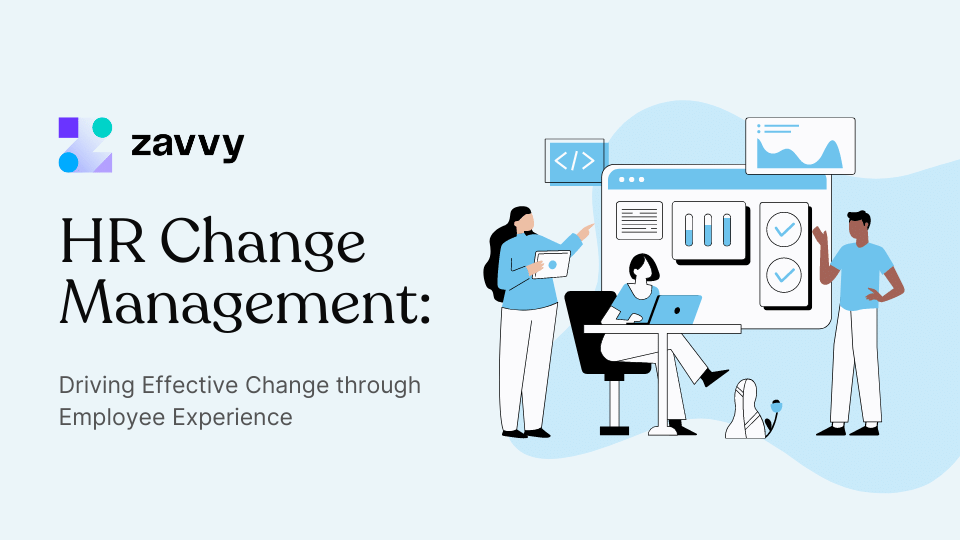
Change is inevitable. It's all around us, it's ongoing, and it's unavoidable. And the way that organizations manage change is critical for their success.
Yet, most change initiatives in organizations fail.
Why? In most cases, organizations fail to embrace effective change management.
Change management is about more than operations or processes—at its core is the employee experience.
Change management, therefore, works best when it's driven by an HR-centric approach.
In this article, we'll uncover why HR change management makes a difference for organizations: what it is, why it's worth getting right, and what it looks like when done well.
Together with our curators, we have created a library of actionable digital marketing resources. Personalized to your team's needs.
Change management is the systematic approach and application of knowledge, tools, and resources to deal with change - the Society for Human Resource Management (SHRM).
The scope of change management is vast—changes can be small or large, internally or externally driven—and it cuts across many parts of an organization, affecting its technical and people aspects.
But as many businesses deal with change, one thing becomes clear: change management is an ongoing process.
Gartner highlights that the typical organization has undergone five major firmwide changes in the past three years, and nearly 75% of them expect this to increase within the next three years.
The familiar adage that "the only constant is change" has never been truer for organizations than it is today.
According to Mind Tools, a career resources hub, there are four core change management principles:
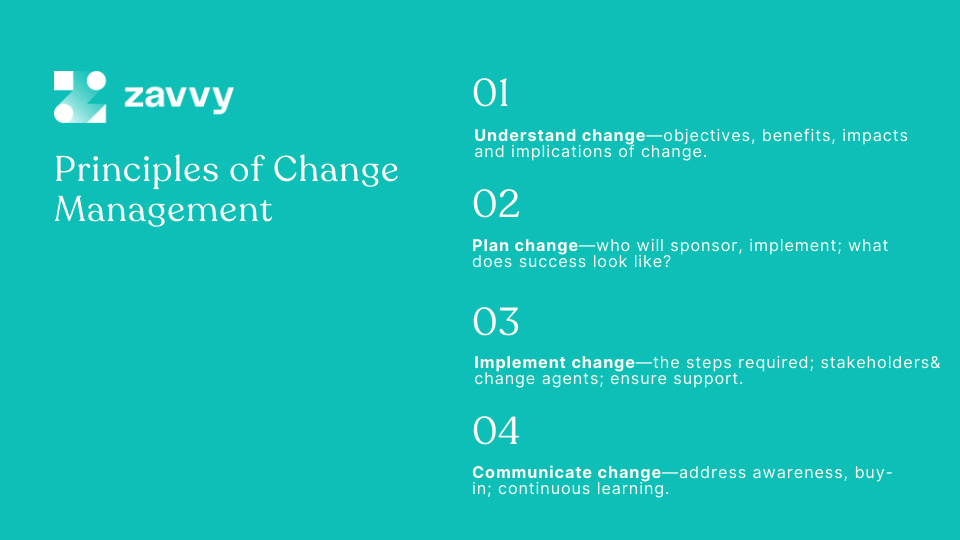
There are several models to assist with organizational change management based on these principles.
When managing change across an entire organization, effective leadership and management skills are not enough—a systematic approach helps maximize the change program's potential impact. Change management models provide the frameworks for this to happen.
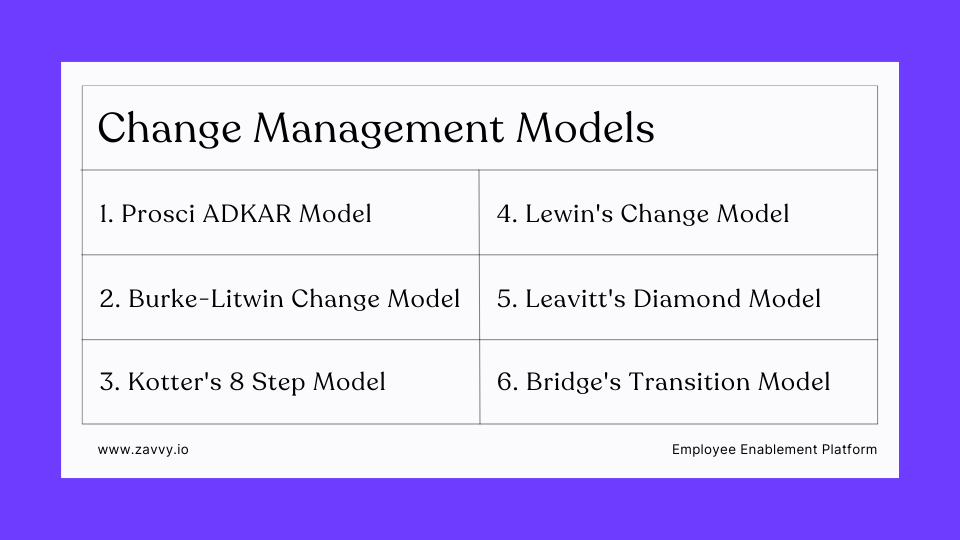
There are various change management models in use today as follows:
With these principles and models in mind, Dr. Debra Cohen, a 25-year HR veteran and leading consultant, explains that HR has multiple roles to play in managing change.
What are these multiple roles? We'll discuss them in the following, based on feedback from HR MBA programs.
In today's constantly evolving business environment, there are many reasons why organizations need to change, including:
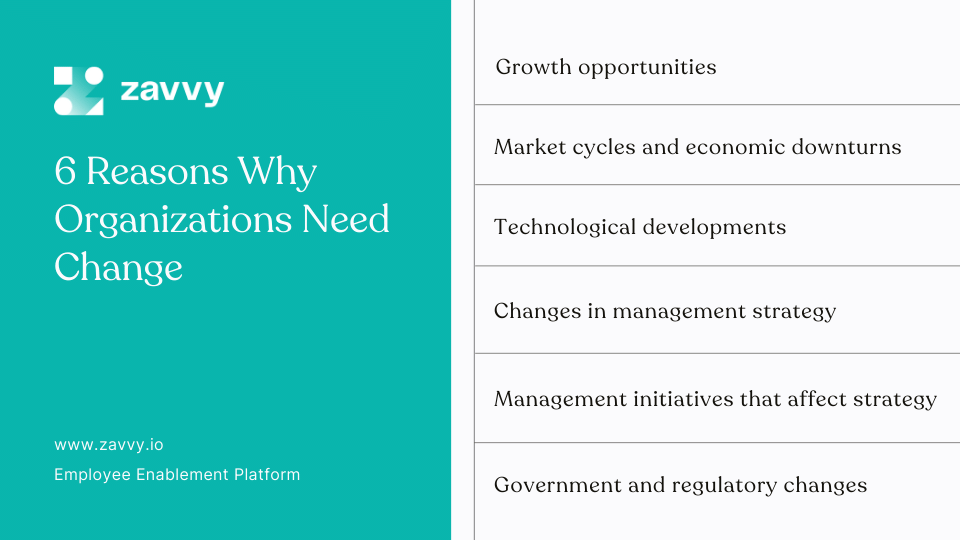
And given the far-reaching consequences of organizational change, it's challenging to avoid adverse outcomes.
For example, Villanova University suggests that change can:
But change is hard to manage—only around one-third of change initiatives succeed, based on a recent global survey by Gartner.
Change management helps address organizational change challenges by facilitating the change process and promoting positive outcomes. It helps by managing the key issues that may arise from a program of change and assist the workforce—from current employees to executive management—throughout the transition.
Nevertheless, change management is a demanding process with many dimensions—from communications to project management, to company culture, to staff turnover, and more.
Of these, Qualtrics, a global workforce solutions firm, considers that leading people through change is one of the most challenging aspects of change management and is fundamental to an organization's success. But HR can play a critical role as a change agent.
HR is often at the forefront of significant change initiatives in organizations.
Effective change management is frequently one of HR's key responsibilities.
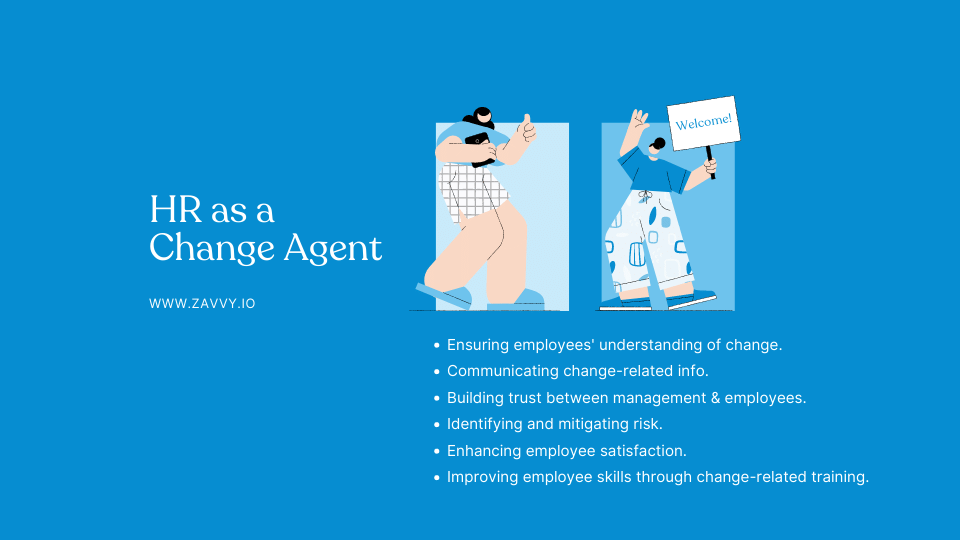
The utility of HR in change management becomes evident when considering the potential negative impact on an organization's workforce—employee engagement, motivation, and well-being—that can result from a program of change.
As SHRM points out, inadequate people management through a change process can be costly for a business: employees who are dissatisfied with change are generally less productive. HR can assist, however, by taking a proactive approach and being an agent for change by promoting the following:
From a business perspective, a well-managed change process can lead to a better return on investment for a change program.
This is why, for example, developing effective change leaders is fundamental to the success of change management.
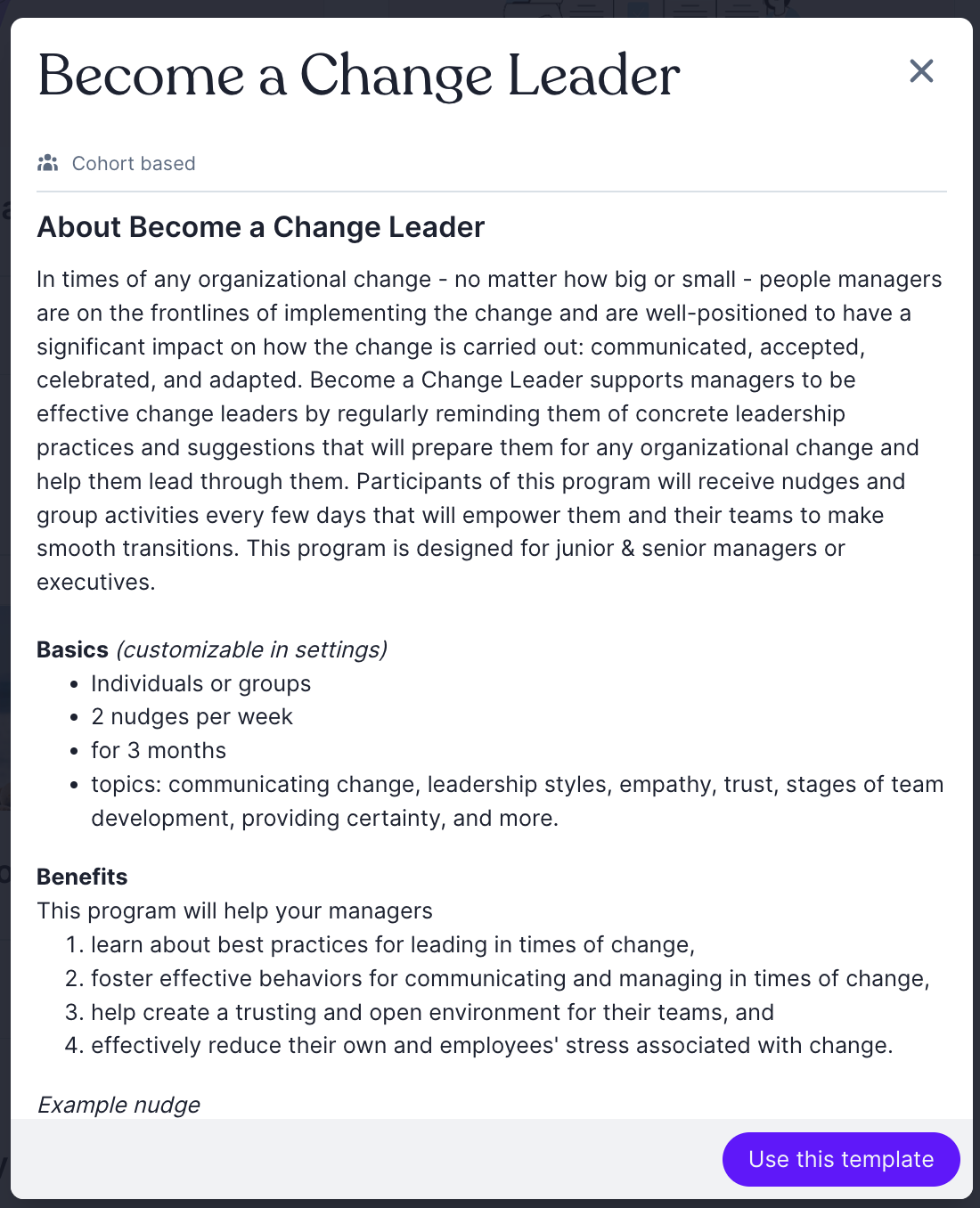
But for HR to be effective in its role, they need to adopt the perspective of a modern people operations function—being an advocate for employees by supporting their engagement, motivation, wellness, and productivity in an organization—rather than a more traditional, task-oriented approach.
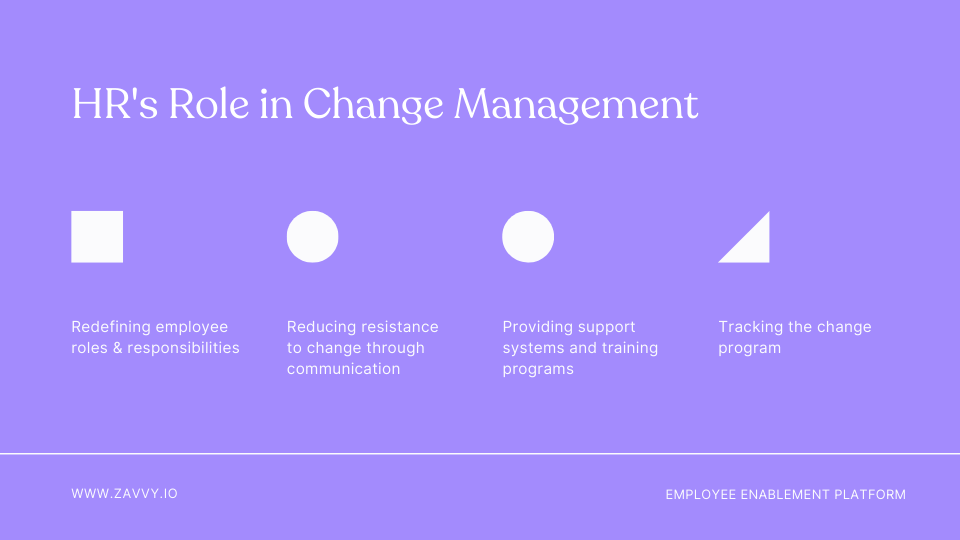
The roles and responsibilities of employees sometimes need to be redefined as part of a change program. This may be due to changes in organizational structure, a realigned vision of corporate development, or the implementation of new technologies and procedures.
In redefining roles and responsibilities, you need to engage with employees and consider the implications for key performance indicators and performance management frameworks associated with the new positions.
Tip #1: In many cases, training programs may also help impacted employees transition smoothly into their new roles.
Charece Newell, a Chief HR Officer, and corporate life coach, explains that change is unsettling and causes stress and fear for employees. The key to combating this, says Newell, is to manage change so that employees see it as an opportunity rather than a threat.
Tip #2: A strategic communication plan that specifically addresses the change can help change employee perspectives on change.
Frequent communications that both introduce and provide ongoing feedback about the change can reduce the stress and anxiety associated with change.
Tip #3: You need to lead this by considering the emotional impact of the change on employees and conveying a vision of how the change will benefit employees and the company as a whole.
Mark Murphy, the founder of LeadershipIQ, highlights that change isn't easy, and 62% of people don't like leaving their comfort zone.
As HR, you have a unique position to provide support through a change program due to:
Relevant training programs can also assist in helping staff understand and come to terms with change. These can take various forms, including on-the-job training sessions, voluntary training, mandatory seminars, and advanced change management training for leadership teams.
➡️ Discover 6 on-the-job training strategies to implement in your organization.
HR should lead training efforts and ensure appropriate training is available for impacted employees.
Change programs are often implemented in stages, allowing time for operational and technological adjustments and for employees to become comfortable with and supportive of the change. HR usually oversees or has direct involvement in the staged implementation of change programs.
As SHRM points out, HR also has an instrumental role in calculating change programs' post-implementation return on investment, identifying relevant key performance indicators, and tracking and communicating results to executive leadership and other stakeholders.
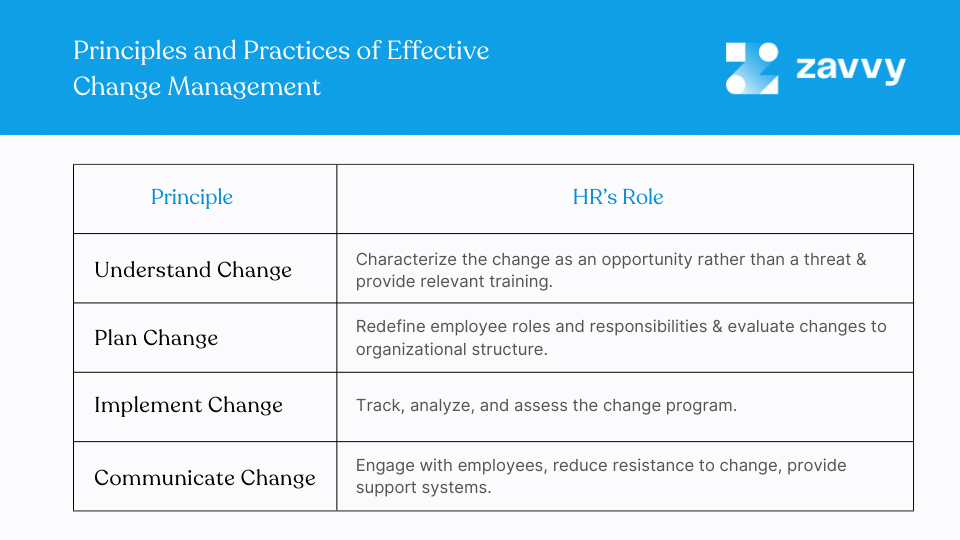
Given the multi-faceted role of HR in change management, what are the practical steps that HR can take to promote successful change?
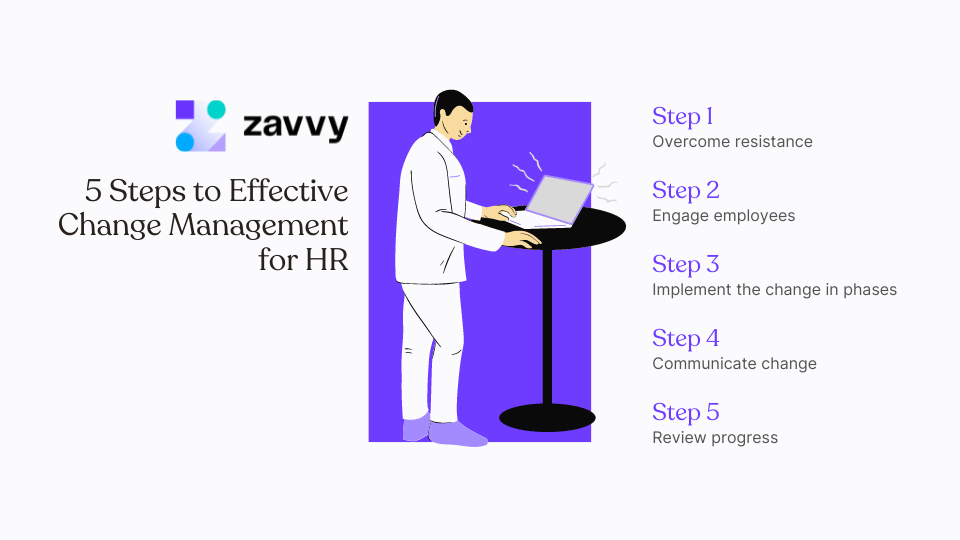
Stacey Browning, Executive Vice President at Paycor, a large payroll and HR systems company, suggests there are 4 essential steps for ensuring effective change management—let's look at these.
Resistance to change from employees is a natural reaction, but it can be overcome by:
Engaged employees are more likely to accept change and work towards successfully implementing change programs.
Boost employee engagement by:
Implementing a change program using a phased approach helps to promote a smooth transition and a seamless change experience. There are three broad phases to adopt:
Maarten Westermann, Senior Director at CEB, a global business advisory firm, suggests that two-thirds of workers don't receive enough information when their companies go through major change. Based on CEB's research, this results from poor communication and can increase the risk of misconduct by up to 42%.
"Companies that communicate with employees ahead of new initiatives and those which consistently reiterate the importance of ethical behavior will see the smallest increase in misconduct when implementing change," says Westermann.
An effective communication approach gives and receives information, i.e., two-way communication, and is fundamental to the success of a change program. A good change-related strategic communication plan should:
In addition to the four steps outlined above, an essential fifth step is highlighted by Kelsey Miller, a contributing author to Harvard Business School's Business Insights publication:
Successfully implementing a change doesn't (yet) mean that the change program is successful.
Post-change analysis and review can help to properly evaluate the change, ensure its ongoing success, and allow future change efforts to succeed.
Change projects fail almost twice as often due to organizational resistance rather than technical or operational reasons.
Employee resistance to change is a significant barrier to the success of change programs. Rosabeth Moss Kanter, a professor of business strategy at Harvard Business School, explains that "resistance to change manifests itself in many ways, from foot-dragging and inertia to petty sabotage to outright rebellions."
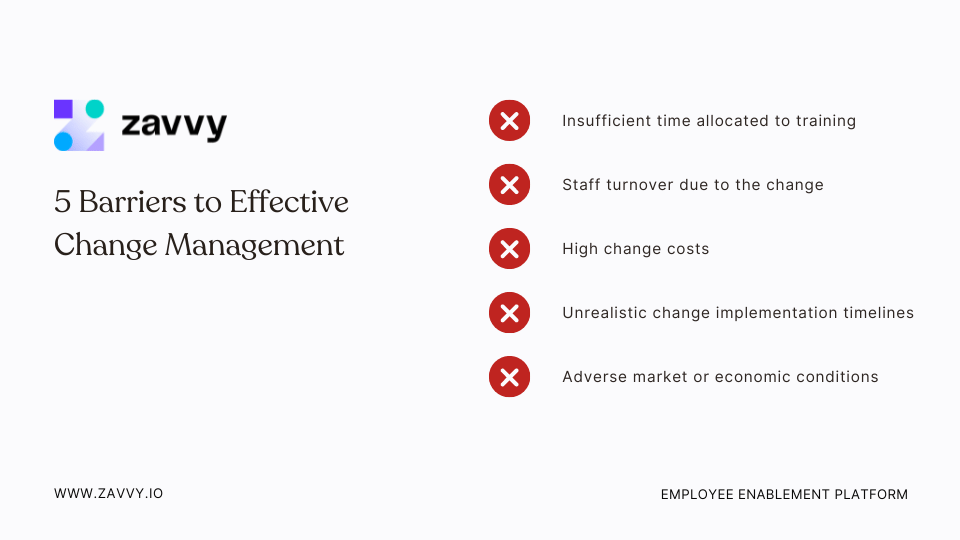
We've already seen how you can overcome resistance to change by using clear communication strategies, appointing change champions, and supporting employees.
Tip #1: It's important to recognize employees who accept the change by rewarding them with tangible and intangible benefits.
Another major barrier to change is a communication breakdown due to a loss of clarity as messaging moves from upper management to the broad base of employees. As we've discussed, you can mitigate this by using a variety of communication approaches. But it's also helpful to ensure that messaging comes from multiple sources, not just your (HR) department.
Tip #2: Involve the executive management, and other departments—and not just the organization's leadership.
Other common barriers to change that may arise and to be watchful for include:
As we've seen, change management is a complex and challenging process. But it can be successful. Let's look at one noteworthy HR change management example.
From 1983 to 1987, British Airways (BA) transformed from a barely profitable airline with poor customer service to one of the world's most prosperous and service-oriented airlines.
BA did this through a robust program of change that featured a people-centric, HR-driven approach.
The critical elements of BA's change management program were:
By following the principles of effective planning and sponsorship, aligned and supportive people management, relevant training, and clear communication, BA's change experience continues to serve as one of the most successful examples of HR change management initiatives in modern times.
Principles and frameworks alone, as important as they are, do not drive change. Instead, purposeful tools are essential for successfully implementing a change management program.
Arcoro outlines the following key tools to facilitate effective change management:
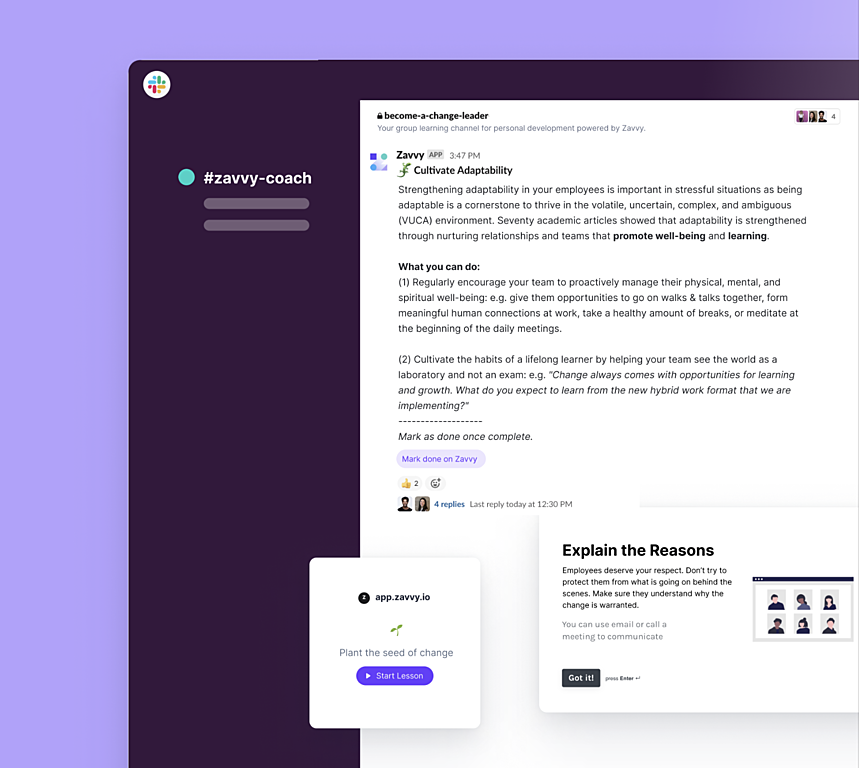
Change management has many dimensions and isn't always easy to get right. But change is inevitable, so managing change effectively is critical for an organization's success.
At Zavvy, we're passionate about change! When done well, change brings dynamism, progress, and the promise of a better future.
You can use Zavvy for documenting company wide changes. You can create a journey that will detail the change management process, so that all employees stay up to date with how their daily activities will be influenced by the changes. You can enrich the journeys with video tutorials, specific to dos, or recurring meetings. And just as importantly, you can track employee engagement regarding the journey. You need to know if employees are reading the emails you sent or watching the training videos you created.
And while we've discussed many aspects of positive change management, at Zavvy, we understand that the most important is to support employees with effective feedback that recognizes their concerns, brings them on board with change, and promotes their prospects in a post-change organization.
Successful organizational change management is synonymous with employee experience. When employees succeed through change, so does the organization.
Book a free 30 minute demo now and become a leader of change in your organization.
Upskill your team every week with the best contents and personalized recommendations.

Change is inevitable. It's all around us, it's ongoing, and it's unavoidable. And the way that organizations manage change is critical for their success.
Yet, most change initiatives in organizations fail.
Why? In most cases, organizations fail to embrace effective change management.
Change management is about more than operations or processes—at its core is the employee experience.
Change management, therefore, works best when it's driven by an HR-centric approach.
In this article, we'll uncover why HR change management makes a difference for organizations: what it is, why it's worth getting right, and what it looks like when done well.
Get a demo!
We'll be happy to show you around and answer all your questions.
Trusted by innovative companies



We'll be happy to show you around, answer your questions, or arrange a free trial.
Erhalten Sie eine kostenlose Demo unserer Onboarding-Software.
Vertraut von



Your Training & Development Strategy - Solved in 1 Tool.
Trusted by innovative companies



We'll be happy to show you around, answer your questions, or arrange a free trial.
Learn how Zavvy helps you drive performance, development, and engagement.
Trusted by innovative companies



We'll be happy to show you around, answer your questions, or arrange a free trial.
We'll be happy to show you around and answer all your questions.
Trusted by innovative companies



We'll be happy to show you around, answer your questions, or arrange a free trial.
Gerne zeigen wir Ihnen ganz unverbindlich unsere Plattform im Detail.
Vertraut von modernen Unternehmen



Get a demo!
We'll be happy to show you around and answer all your questions.
Trusted by innovative companies



We'll be happy to show you around, answer your questions, or arrange a free trial.
Erhalten Sie eine kostenlose Demo unserer Software für Mitarbeiterenwicklung und Training.
Moderne Unternehmen
setzen auf Zavvy


